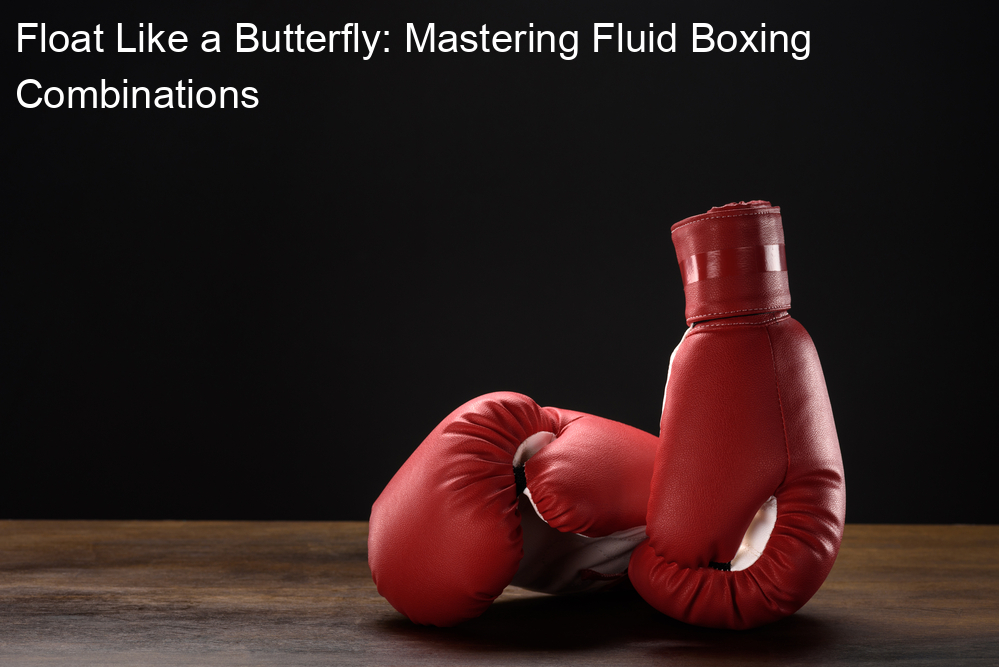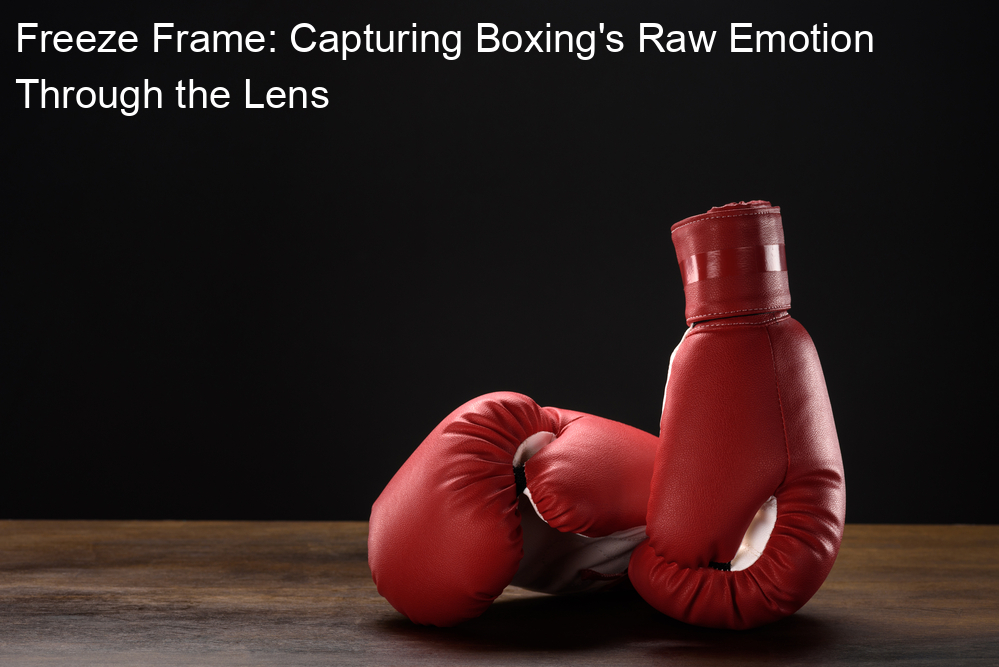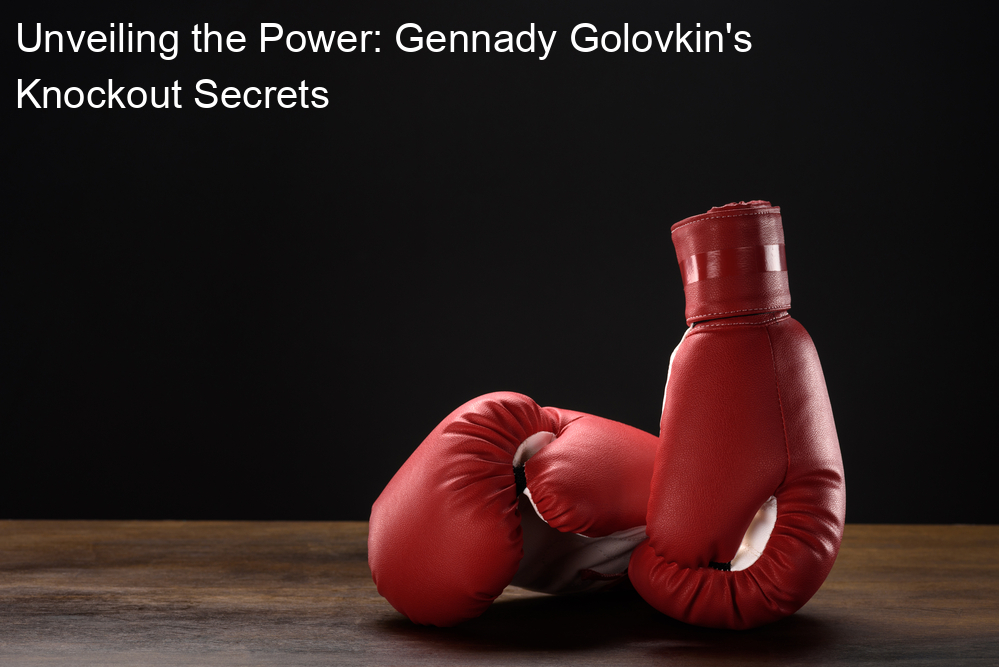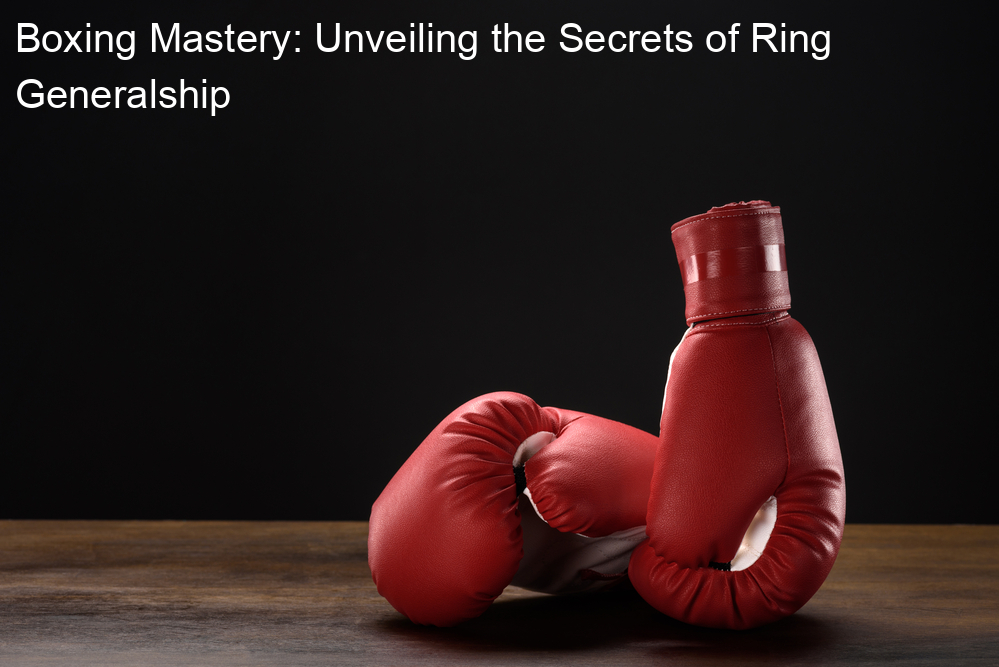
Introduction to Boxing Combinations
Boxing is a sport that requires not only physical strength but also strategic thinking and precision. One of the key elements in boxing is the use of combinations. These are sequences of punches that are thrown in a specific order to maximize impact and effectiveness. In this section, we will delve into the art of boxing combinations and the importance of mastering this skill.
- Understanding the Art of Boxing Combinations
- Importance of Boxing Mastery
A boxing combination is a series of punches delivered in a specific sequence. For instance, a common combination is the ‘one-two’ punch, which involves a jab (a quick, straight punch with the lead hand) followed by a cross (a powerful punch with the back hand). The art of boxing combinations lies in the ability to execute these punches with speed, accuracy, and power. It’s not just about throwing punches randomly, but about understanding the rhythm, timing, and strategy behind each combination.
Mastering the art of boxing combinations is crucial for any boxer. It can be the difference between winning and losing a match. A well-executed combination can catch an opponent off guard, break through their defense, and potentially lead to a knockout. Moreover, mastering boxing combinations also improves a boxer’s agility, coordination, and overall boxing technique. As the famous boxing champion, Muhammad Ali once said, “The fight is won or lost far away from witnesses – behind the lines, in the gym, and out there on the road, long before I dance under those lights.”
In the following sections, we will delve deeper into the art of boxing combinations, discussing fluid sequences in boxing and how to master them. So, lace up your gloves and get ready to step into the ring!
Mastering Boxing Art
Boxing is a beautiful blend of strength, strategy, and skill. To truly master the art of boxing, one must understand its basics and intricacies. In this section, we will delve into the fundamental aspects of boxing art, focusing on boxing stances and the importance of footwork.
Basics of Boxing Art
Boxing art is more than just throwing punches. It involves a deep understanding of the stance and footwork. Let’s explore these two fundamental aspects.
- Understanding Boxing Stances
- Importance of Footwork in Boxing
The boxing stance is the position a boxer takes before and after the delivery of punches. It is a crucial aspect of boxing art as it determines the effectiveness of your attacks and your ability to defend yourself. There are two primary stances in boxing: the orthodox stance and the southpaw stance.
The orthodox stance is for right-handed boxers. In this stance, the left hand and left foot are forward, allowing the boxer to lead with left jabs and follow up with a right cross. The southpaw stance, on the other hand, is for left-handed boxers. It’s the mirror image of the orthodox stance, with the right hand and right foot forward.
Choosing the right stance is essential as it impacts your balance, reach, and power. It’s important to practice both stances and understand their strengths and weaknesses.
Footwork is another fundamental aspect of boxing art. Good footwork allows a boxer to move swiftly and efficiently in the ring, maintain balance, evade opponent’s punches, and position oneself for effective attacks.
Proper footwork involves moving the feet just a few inches at a time to maintain balance. The lead foot moves first when moving forward or sideways, and the back foot moves first when moving backward. This technique ensures that a boxer is always in a position to attack or defend.
Boxers with good footwork can control the distance between themselves and their opponents, making it harder for their opponents to land punches. They can also quickly change directions, keeping their opponents guessing and creating opportunities for counterattacks.
In conclusion, understanding boxing stances and mastering footwork are crucial to mastering the art of boxing. They form the foundation upon which other boxing techniques are built. So, if you aspire to be a skilled boxer, start by mastering these basics.
Advanced Boxing Art Techniques
Now that we’ve covered the basics of boxing art, it’s time to delve into more advanced techniques. These techniques will help you create and master boxing sequences, leading to a more fluid and effective fighting style.
- Creating Boxing Sequences
Creating boxing sequences involves combining different punches and movements into a smooth, flowing series. It’s like creating a dance routine, but instead of steps and spins, you’re using jabs, hooks, and uppercuts.
Start by practicing individual punches. Once you’ve mastered these, you can start to combine them. For example, you might start with a jab, follow up with a cross, and finish with an uppercut. This is a simple three-punch sequence.
As you get more comfortable, you can start to add more punches and movements to your sequences. Remember, the key is to make your sequences flow smoothly. You want your movements to be fluid and natural, not stiff and robotic.
- Mastering Boxing Sequences
Mastering boxing sequences takes time and practice. It’s not enough to just know the punches and movements; you need to be able to execute them with precision and speed.
One effective way to master boxing sequences is to practice them in slow motion. This allows you to focus on each movement and ensure that you’re executing it correctly. Once you’re comfortable with the sequence, you can start to speed it up.
Another key to mastering boxing sequences is repetition. The more you practice a sequence, the more natural it will become. Eventually, you’ll be able to execute the sequence without even thinking about it.
Remember, mastering boxing sequences is a journey, not a destination. Even the best boxers in the world are constantly learning and improving. So keep practicing, stay patient, and enjoy the process.
In conclusion, advanced boxing art techniques involve creating and mastering boxing sequences. By practicing these techniques, you can develop a fluid and effective fighting style that will give you an edge in the ring.
Fluid Sequences in Boxing
In the world of boxing, fluidity is not just a concept, but a fundamental skill that separates the good from the great. Let’s delve into the importance of fluid sequences and explore some examples of fluid boxing techniques.
Understanding Fluid Boxing Techniques
Fluid boxing techniques are all about smooth, seamless movements that allow boxers to deliver powerful punches while maintaining their balance and defense. These techniques require a combination of speed, precision, and rhythm. Now, let’s look at why fluidity is so crucial in boxing and some examples of these techniques.
- Importance of Fluidity in Boxing
- Examples of Fluid Boxing Techniques
Fluidity in boxing is important for several reasons. Firstly, it allows boxers to maintain a steady rhythm, making it difficult for their opponents to predict their next move. Secondly, fluid movements help boxers conserve energy, enabling them to last longer in the ring. Lastly, fluidity enhances the power and speed of punches, giving boxers an edge over their opponents.
There are several examples of fluid boxing techniques that demonstrate the importance of fluidity. One such technique is the ‘jab-cross-hook’ combination. This sequence starts with a quick jab, followed by a powerful cross, and ends with a devastating hook. The key to this technique is the seamless transition between each punch, which requires both skill and practice.
Another example is the ‘slip and counter’ technique. In this move, a boxer swiftly dodges an incoming punch (the slip) and immediately retaliates with a counterpunch. This technique showcases the importance of fluidity in both defense and offense in boxing.
In conclusion, fluid sequences in boxing are not just about throwing punches. They involve a complex interplay of rhythm, speed, precision, and strategy. Mastering these fluid techniques can significantly enhance a boxer’s performance in the ring.
Creating Fluid Boxing Combinations
Creating fluid boxing combinations is an art that requires practice and understanding. It’s not just about throwing punches; it’s about how you throw them and in what order. Here, we will guide you through the steps to create fluid boxing combinations and how to practice them effectively.
- Steps to Create Fluid Boxing Combinations
- Understand the Basics: You need to have a good grasp of the basic punches – jab, cross, hook, and uppercut. Each punch has its own purpose and is effective in different situations.
- Master the Footwork: Good footwork is essential for creating fluid combinations. It allows you to move around the ring, maintain balance, and position yourself for effective punches.
- Plan Your Combinations: Plan your combinations in advance. Think about the punches you want to throw and the order you want to throw them in. A good combination should be unpredictable and keep your opponent off balance.
- Practice: Like any skill, practice makes perfect. The more you practice your combinations, the more fluid they will become.
- Practicing Fluid Boxing Combinations
- Shadow Boxing: Shadow boxing is a great way to practice your combinations. It allows you to focus on your form and technique without the pressure of an opponent.
- Heavy Bag: The heavy bag is a great tool for practicing combinations. It provides resistance and allows you to work on power and speed.
- Sparring: Sparring is the ultimate test of your combinations. It allows you to apply your combinations in a real boxing scenario against an opponent.
Creating fluid boxing combinations involves a few key steps:
Practicing fluid boxing combinations involves repetition and consistency. Here’s how you can practice effectively:
In conclusion, creating and practicing fluid boxing combinations requires understanding, planning, and consistent practice. With time and effort, you can master the art of fluid boxing combinations and become a formidable opponent in the ring.
Art of Combinations in Boxing
In the sport of boxing, the art of combinations is a critical skill that can elevate a boxer’s performance. Combinations are sequences of punches thrown in quick succession, designed to overwhelm an opponent and create openings for powerful, scoring blows.
Understanding Boxing Combination Creation
Creating effective boxing combinations is not just about throwing punches randomly. It requires a deep understanding of timing, rhythm, and strategy. Let’s delve into the importance of combinations in boxing and explore some examples of effective boxing combinations.
- Importance of Combination in Boxing
- Examples of Effective Boxing Combinations
Boxing combinations are essential for several reasons. Firstly, they keep your opponent on the defensive, making it harder for them to launch their attacks. Secondly, combinations increase your chances of landing a punch as your opponent is forced to constantly adjust their defense. Lastly, well-executed combinations can confuse and disorient your opponent, creating opportunities for a knockout punch.
There are countless boxing combinations, each with its unique advantages. Here are a few examples:
| Combination | Description |
|---|---|
| Jab-Cross | This is a basic two-punch combination where a quick jab (a straight punch with the lead hand) is followed by a cross (a powerful straight punch with the rear hand). |
| Jab-Cross-Hook | This three-punch combination starts with a jab and a cross, followed by a hook (a semi-circular punch thrown with the lead hand to the side of the opponent’s head). |
| Jab-UpperCut | This combination starts with a jab, followed by an uppercut (a vertical, rising punch thrown with the rear hand aimed at the opponent’s chin). |
Remember, the effectiveness of a boxing combination greatly depends on the timing, speed, and accuracy of your punches. Practice these combinations regularly to improve your boxing skills.
Mastering the Art of Boxing Combinations
Boxing is not just about throwing punches; it’s about doing so in a calculated manner. A crucial part of this strategy involves boxing combinations. Mastering these combinations can significantly improve your boxing prowess. Let’s delve into the steps to master boxing combinations and how to practice them effectively.
- Steps to Master Boxing Combinations
- Understand the Basics: Before you can master combinations, you need to understand the basics of boxing. This includes knowing how to throw a jab, a cross, a hook, and an uppercut.
- Learn the Combinations: There are many boxing combinations, and each has its purpose. Some combinations are designed to be defensive, while others are offensive. Start by learning the basic combinations before moving on to the more complex ones.
- Practice: The key to mastering anything is practice. The same applies to boxing combinations. Practice these combinations until they become second nature to you.
- Practicing Boxing Combinations
- Shadow Boxing: Shadow boxing is a great way to practice your combinations. It allows you to focus on your technique without the pressure of an opponent.
- Heavy Bag: The heavy bag is another excellent tool for practicing combinations. It provides resistance, which can help improve your power and timing.
- Sparring: Sparring is the closest thing to a real fight. It allows you to practice your combinations against an opponent who is trying to hit you back.
Boxing combinations are sequences of punches that are designed to be thrown in a specific order. Here are some steps to master these combinations:
Practicing boxing combinations is vital to mastering them. Here are some tips on how to practice boxing combinations effectively:
In conclusion, mastering boxing combinations involves understanding the basics, learning the combinations, and practicing them. Shadow boxing, hitting the heavy bag, and sparring are all effective ways to practice these combinations. With time and dedication, you can master the art of boxing combinations and become a formidable boxer.
Conclusion: Boxing Mastery
As we wrap up our discussion on boxing mastery, it’s important to reflect on the key insights and lessons we’ve learned. Boxing is not just about throwing punches; it’s about strategy, timing, and the art of combinations. Let’s summarize our key takeaways and look at some case studies of successful boxing mastery.
- Key Takeaways in Mastering Boxing Combinations
- Boxing combinations are about fluidity and rhythm. It’s not about throwing random punches, but about creating a sequence that confuses and overwhelms your opponent.
- Practice makes perfect. The more you practice your combinations, the more natural they will feel in a real boxing match.
- Always keep your guard up. Even while executing combinations, protecting yourself should be your top priority.
- Use your whole body. Boxing is not just about your arms; your legs, torso, and even your head are all part of the equation.
- Case Studies of Successful Boxing Mastery
- Muhammad Ali: Known as “The Greatest,” Ali was famous for his speed, agility, and powerful combinations. His “float like a butterfly, sting like a bee” style is a perfect example of boxing mastery.
- Manny Pacquiao: This Filipino boxer is known for his aggressive style and quick, powerful combinations. His ability to throw punches from different angles makes him a tough opponent in the ring.
- Floyd Mayweather Jr.: Mayweather is a master of defensive boxing. His ability to avoid punches and counter with quick combinations has made him one of the most successful boxers in history.
Mastering boxing combinations is a critical aspect of boxing mastery. Here are some key points to remember:
Now, let’s look at some examples of successful boxers who have mastered the art of combinations:
In conclusion, boxing mastery is about more than just physical strength. It’s about strategy, technique, and the art of combinations. By understanding and practicing these principles, you too can become a master in the ring.






